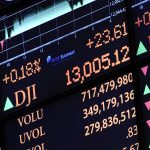Gold and silver futures were deeper in the red during midday trade in Europe today. The precious metals were pressured by a more hawkish Fed seen in the July meeting minutes. Meanwhile, copper was lower after Chinese factories logged sluggish growth.
Gold futures for December delivery traded at $1 276.5 per troy ounce, up 1.44% for the day, at 13:31 GMT on the Comex in New York today. Prices ranged from a two-month low of $1 274.0 to $1 292.0 per troy ounce. Gold declined 0.1% yesterday, logging the fifth straight session of losses.
Silver for September delivery stood for a 0.65% drop at $19.370 per troy ounce, after reaching a two-month low of $19.285 earlier. Silver prices added ~0.4% on Wednesday.
Minutes from Fed’s latest meeting buoyed the dollar yesterday, as traders priced in a more hawkish stance by some policy makers, who debated whether a rate hike should be introduced earlier than previously expected. Officials agreed that further positive data was needed before such a decision be taken, though the hint of hike hit gold.
The Fed decided to keep the US benchmark interest rate unchanged at 0.25% at its July meeting. A higher borrowing rate would increase the value of the dollar, pressuring gold.
The US Dollar Index, which measures the greenback’s strength against other major currencies, is at a one-year high after adding ~1% over the past four sessions.
“Gold had already been under pressure from the dollar. Once it broke below the 200-day moving average near $1 284, there was heavy selling,” one precious metals trader said for Reuters.
Since gold, like many other commodities, is mostly traded in dollars, the value of the US currency plays a major role in the metal’s investment appeal, with a stronger dollar lifting the price of gold to foreign currencies and vice versa.
EU, US data
France’s manufacturing sector contracted at a faster pace, data by Markit showed today, with France’s preliminary manufacturing PMI sliding to 46.5 in August from 47.8 in July. If confirmed, this would be the lowest since May 2013. Analysts had expected a flat reading. Values below the threshold of 50 indicate a contraction in the sector.
Germany’s manufacturing sector, however, outperformed economists’ projections, with the flash German manufacturing PMI registering at 52.0, compared to 52.4 in July, but beating predictions for a drop to 51.8. If confirmed, this would be the 14th straight month of expansion. Bloc-wide services PMI was logged at 53.5, in line with expectations, while factory PMI was at 50.8, signaling a significant growth slowdown.
US jobless claims were reported largely as expected today, with 298 000 new applications for benefits in the week through August 16. Later today existing home sales, manufacturing PMI and and Philly Fed Manufacturing Index will be posted.
Investor focus now shifts towards a central banks meeting in the US and speeches that follow on Friday, with traders looking for cues from Yellen, and especially Draghi, for updated rates outlooks.
Ukraine, Gaza
Fighting in eastern Ukraine continued with high intensity on Wednesday, as government troops battle with pro-Russian separatists. Battles left at least 34 civilians dead on Tuesday alone, the BBC reported, bringing the estimated death toll to over 2 100, while a further 5 400 people were injured.
Meanwhile, the controversial Russian aid convoy was given a green light by Kiev, though it is still not moving in, as authorities in Kiev and Moscow await clearance by the International Committee of the Red Cross (ICRC). Both sides had asked the ICRC to mediate the humanitarian aid mission.
The Red Cross had still not been given security guarantees, officials said, which the ICRC require in order to liaise the Russian supplies with civilians in embattled zones in eastern Ukraine.
“Such guarantees for the ICRC should be provided, first of all, by the terrorists groups controlled by Russia, as well as by Russia itself,” Kiev said.
Elsewhere, Israeli PM Benjamin Netanyahu pledged to see the military campaign in Gaza through “with all means necessary” and until the safety of Israel is secured, as Hamas-fired rockets continued landing in Israel on Wednesday.
The remarks come after yesterday the Israeli military bombed a residence in Gaza, presumed to house Hamas’ military leader Mohammed Deif. The strike left his wife and young son dead, while he was said to have been elsewhere at the time, sparing his life.
Israel justified the strike on Wednesday, calling Mr Deif a “legitimate target”.
Yaakov Perry, Israel’s science minister and former security service chief, said he was “convinced that if there was intelligence that [Mr Deif] was not inside the home, then [Israel] would not have bombed it”.
Early on Thursday, Israel carried out more airstrikes on houses in Gaza, killing several high-ranking Hamas commanders, the Palestinian authority said.
The latest exchanges of fire between Hamas, which controls Gaza, and Israel come after peace talks brokered by Egypt crumbled. The principal demand by Israel that Gaza must demilitarize is dismissed by Hamas, while Israel refuses to ease the blockade on the Palestinian enclave and demands it has control over its borders in any case.
Meanwhile, Amnesty International and Human Rights Watch accused Israel of disallowing their members from entering Gaza to evaluate the plausibility of committed war crimes by both sides.
The conflict in Gaza has claimed more than 2 000 Palestinian lives, mostly civilians, and 66 Israelis since flaring back to life some six weeks ago.
Assets at the SPDR Gold Trust, the largest exchange-traded gold fund, added ~1 ton on Wednesday, reaching the highest level in a month and logging the fourth straight day of gains. Increasing volumes at the fund signal higher investor interest in gold, seen as a safe haven in times of economic or political upheaval.
Copper
Copper futures for September delivery traded at $3.1620 per pound, down 0.47%. The red metal added 2.87% on Wednesday.
“In the very short term, yesterdays rally probably made some people sensitive about selling too aggressively today, so theres some caution in the air,” analyst Vivienne Lloyd at Macquarie in London said for Reuters. “We think its going to be lower for the rest of the second half of the year because not only do you have the impact of the Qingdao probe, but youve got a softening environment in China, higher supply and weaker demand growth from this point.”
Preliminary readings by HSBC and Markit Economics showed that manufacturing activity growth in China slid in August to the lowest in three months. The Flash China Manufacturing PMI registered at 50.3 in August from July’s final reading of 51.7. At the same time, the Flash China Manufacturing Output Index slid to 51.3 from 52.8 in July, also a three-month low.
Hongbin Qu, Chief Economist, China & Co-Head of Asian Economic Research at HSBC commented on the report: “Today’s data suggest that the economic recovery is still continuing but its momentum has slowed again. Therefore, industrial demand and investment activity growth will likely stay on a relatively subdued path. We think more policy support is needed to help consolidate the recovery. Both monetary and fiscal policy should remain accommodative until there is a more sustained rebound in economic activity.”
China is the worlds leading copper consumer with a 40% share of total demand.
Investors are now looking at upcoming US housing and manufacturing figures.





